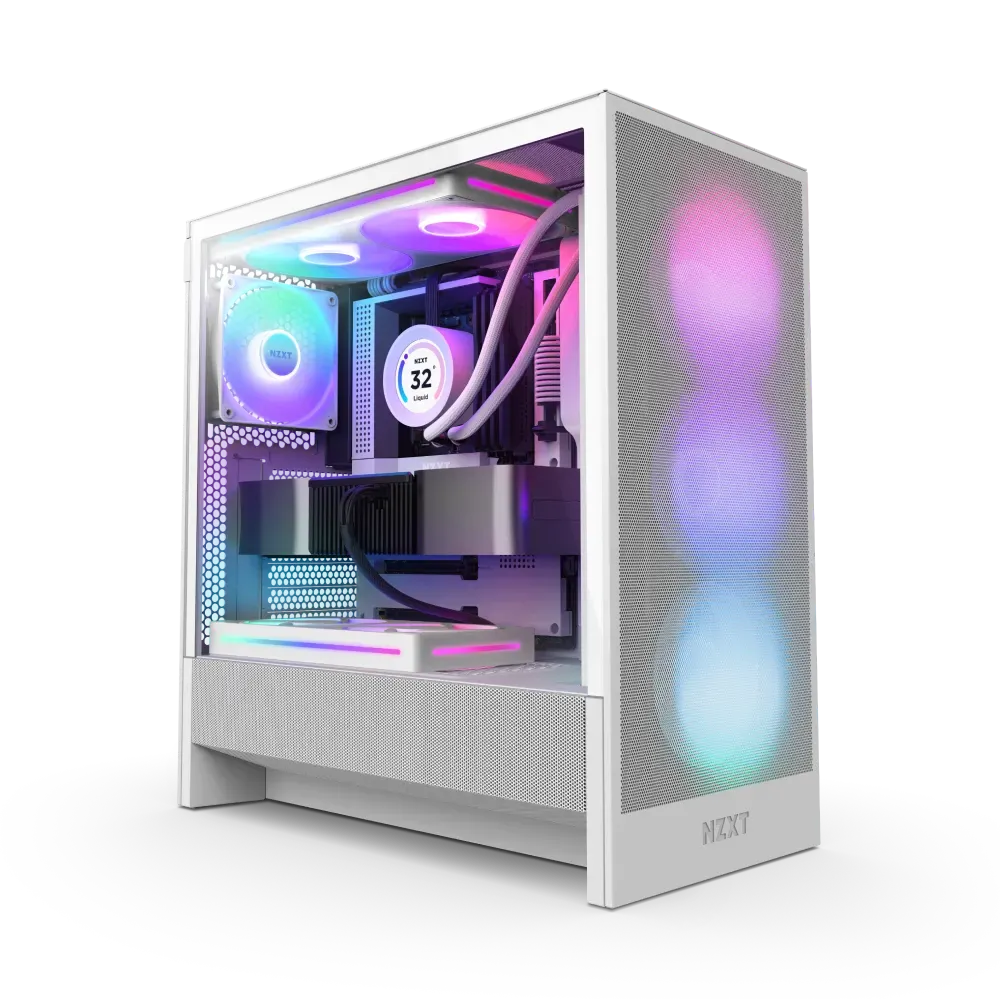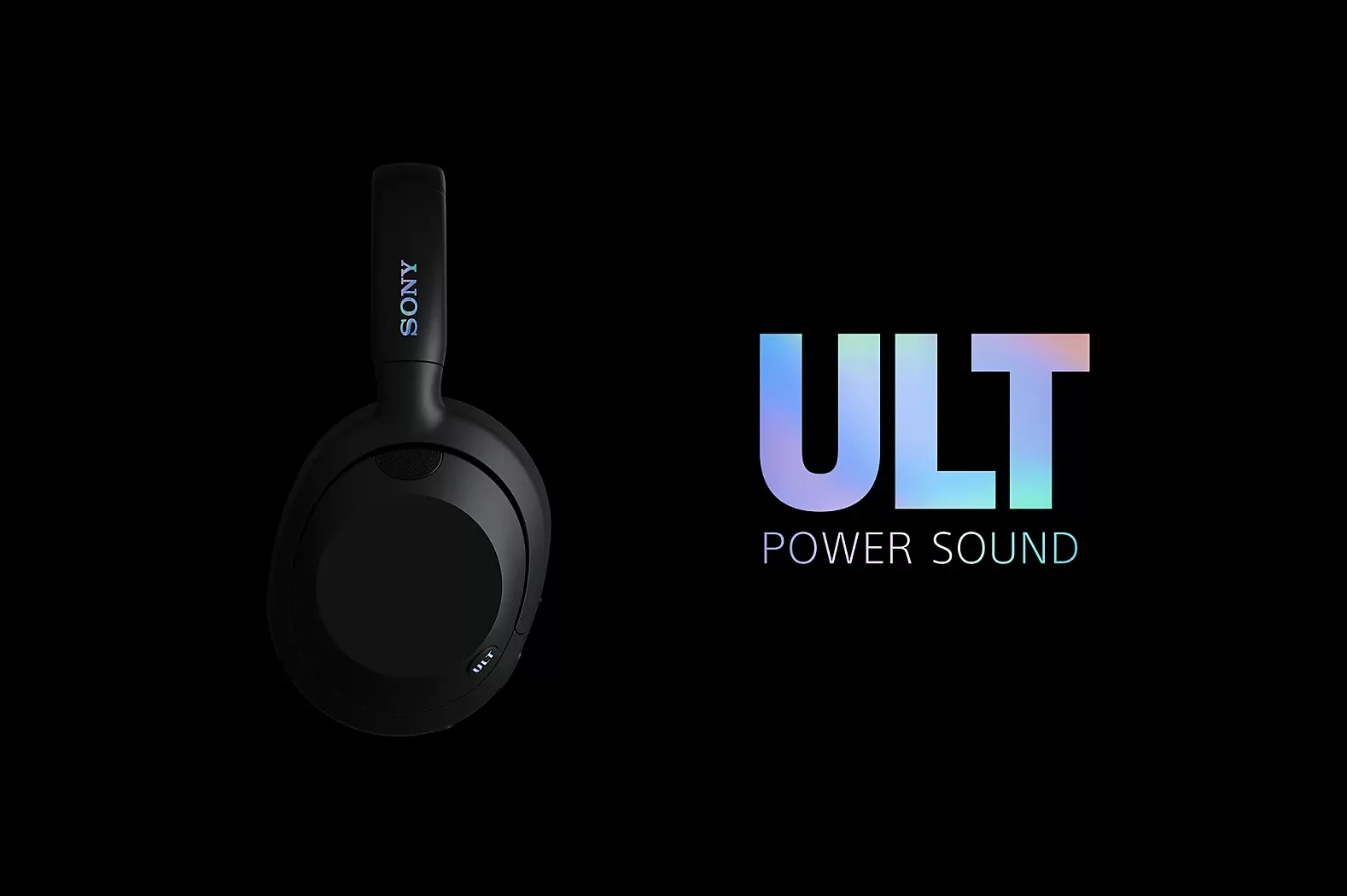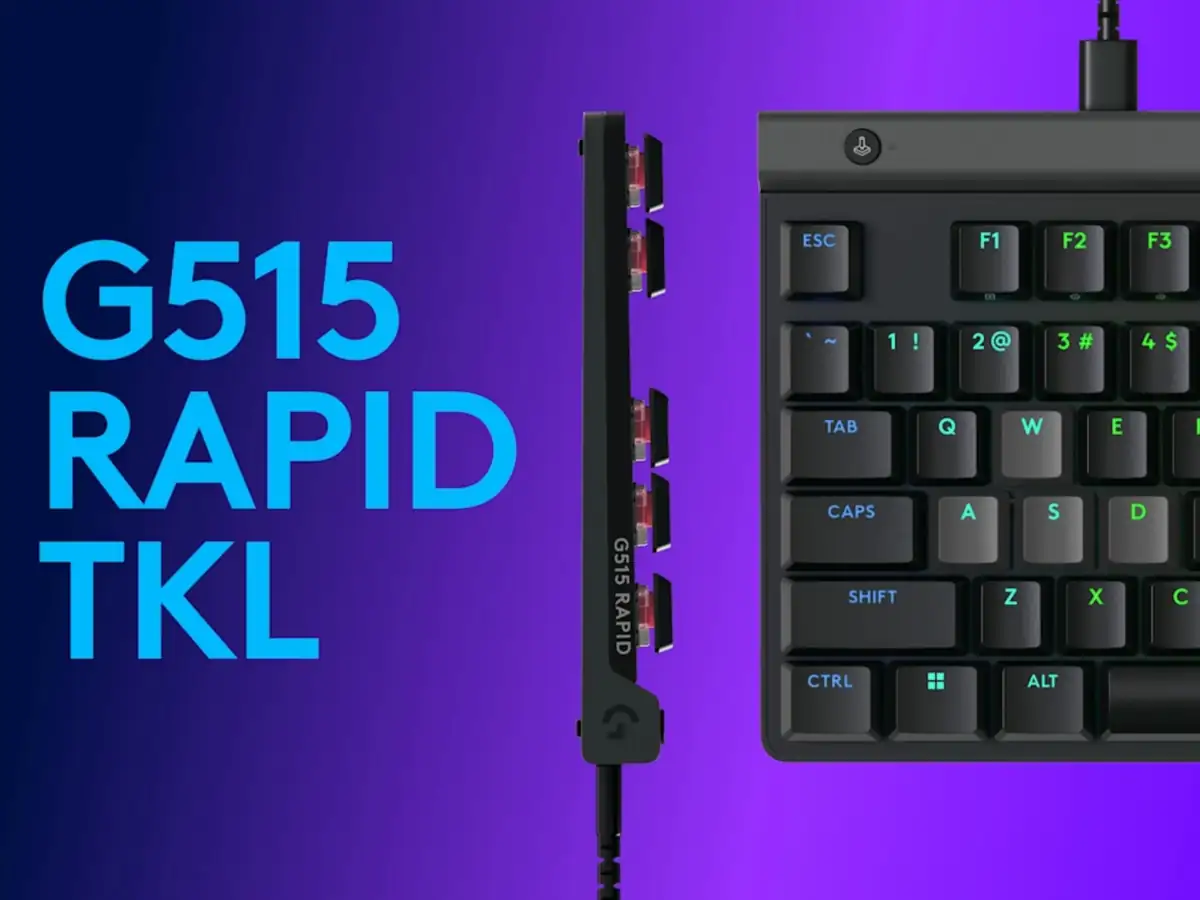My desktop is almost eight years old. The GPU, or graphics card, died midway through the first pandemic, and I’ve since settled for a hand-me-down. It runs fine, mostly, at 1080p, just as long as I don’t ask too much from it. And it’s loud like an aircraft carrier.
The reason for not updating is simple and in two parts. First, computer parts are expensive these days. Second, there are so many of them and in such vast configurations, that it’s simply overwhelming to get started. Longtime readers will know that part of my autism and ADHD is executive dysfunction. It’s an emotional and mental paralysis in the face of choice. If there’s too much information right off the bat, I shut down. It affects every part of my life, and certainly my hobbies.
Which is why I’m hesitant to cover certain parts of PC gaming. There are fantastic YouTubers out there who can tell you all about the teraflops and stats of every card on the market. I can’t, and that area doesn’t interest me. It’s not reflective of how I use them in real life. For me, and what I’ve come to understand is the majority of my readers, what matters is does the component works – and whether it's easy to use.
So when NZXT invited me to check out their new gear, I was initially hesitant. At least until I heard their pitch. The essential message was simple: When everyone games, we all win. That intrigued me. After all, it’s easy to say, but how does that kind of mentality work in practice?
The first thing I notice about NZXT’s newest lineup is how well the form complements the function. By that I mean it looks nice, but also that it’s intuitive to use. That’s not a given with tech these days, where something can look amazing, but result in finicky and unintuitive controls. Again, if I have to resort to the manual even before I turn a simple device on, it usually means it doesn’t become a daily driver.
Based on the presentation and my two weeks with the review gear, I don’t think that’s going to be a problem with NZXT.
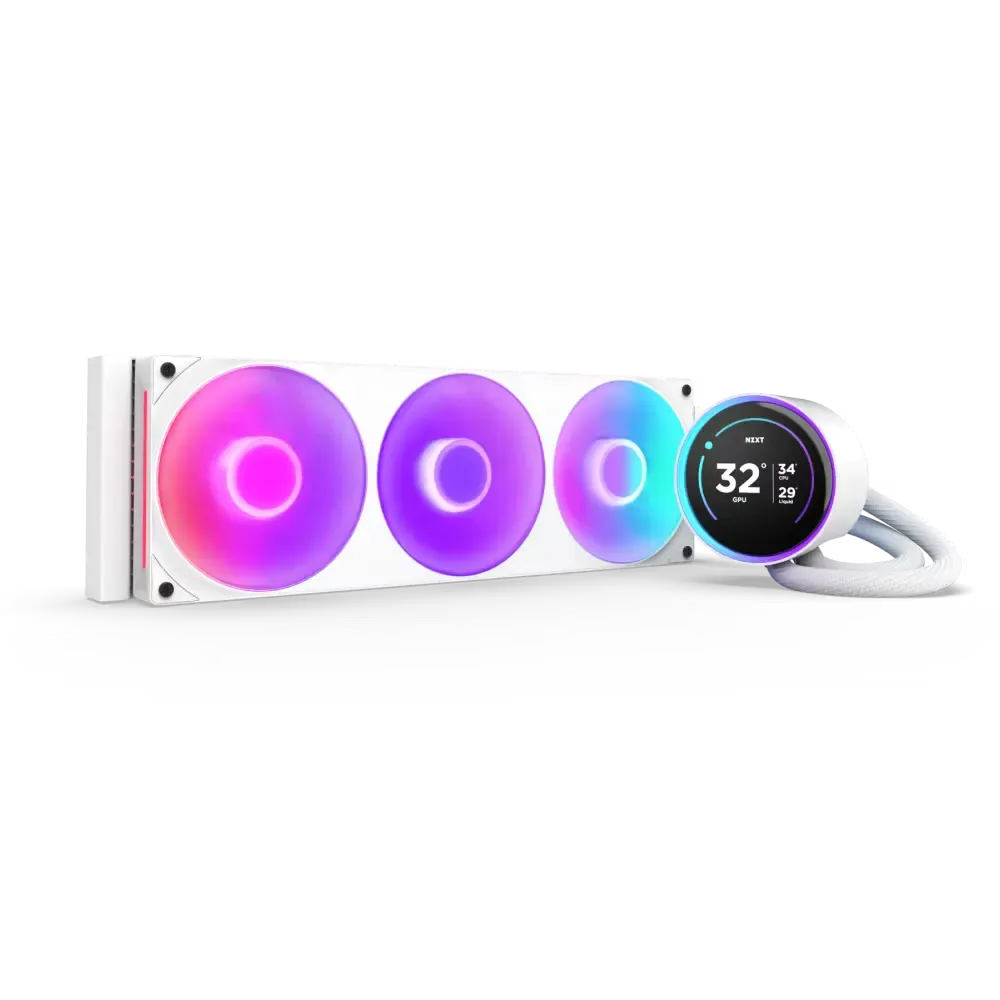
Easy to build, easy to use
We dive right into the deep end. The first component is the Kraken Elite 360 liquid coolers for the CPU. Even the name is imposing. My current rig has a simple fan for the CPU, and it was a pain to mount. It’s loud, inefficient, and barely functional. But I haven’t changed it, because I’m afraid of taking it apart and starting over with something new.
But the Kraken looks different. It’s elegant and simple. I look closer and spot only a single cable snaking its way through the case.
“You only need the single breakout cable for this,” the NZXT rep says proudly. “The whole idea is how do we make this easy for the customer to install.”
The list goes on. The liquids come pre-installed. The thermal paste comes pre-applied. A 60hz LCD indicates temperature — or an image of your choosing.
It still requires traditional mounting, but even here NZXT comes through. Even the white model, which is stunningly pretty, has clear, friendly indicators for ease of use. I later got my hands on the manual, and while the process is reminiscent of older installations, the instructions themselves are clear and well thought out. There’s still a lot of text on a single page, including multiple languages, but certainly better than before.
In practice, the Kraken Elite 360 is still a CPU cooler, meaning it keeps the brains of your computer from overheating. But with a digital face, easy-to-install guide, and the removal of a typical cable nightmare, NZXT has lowered the bar of what that means. When I think of CPU coolers, I remember the nightmare of my current one. Instead, this isn’t just a usable upgrade. It’s a visual statement that makes the PC build a part of your room's personality.
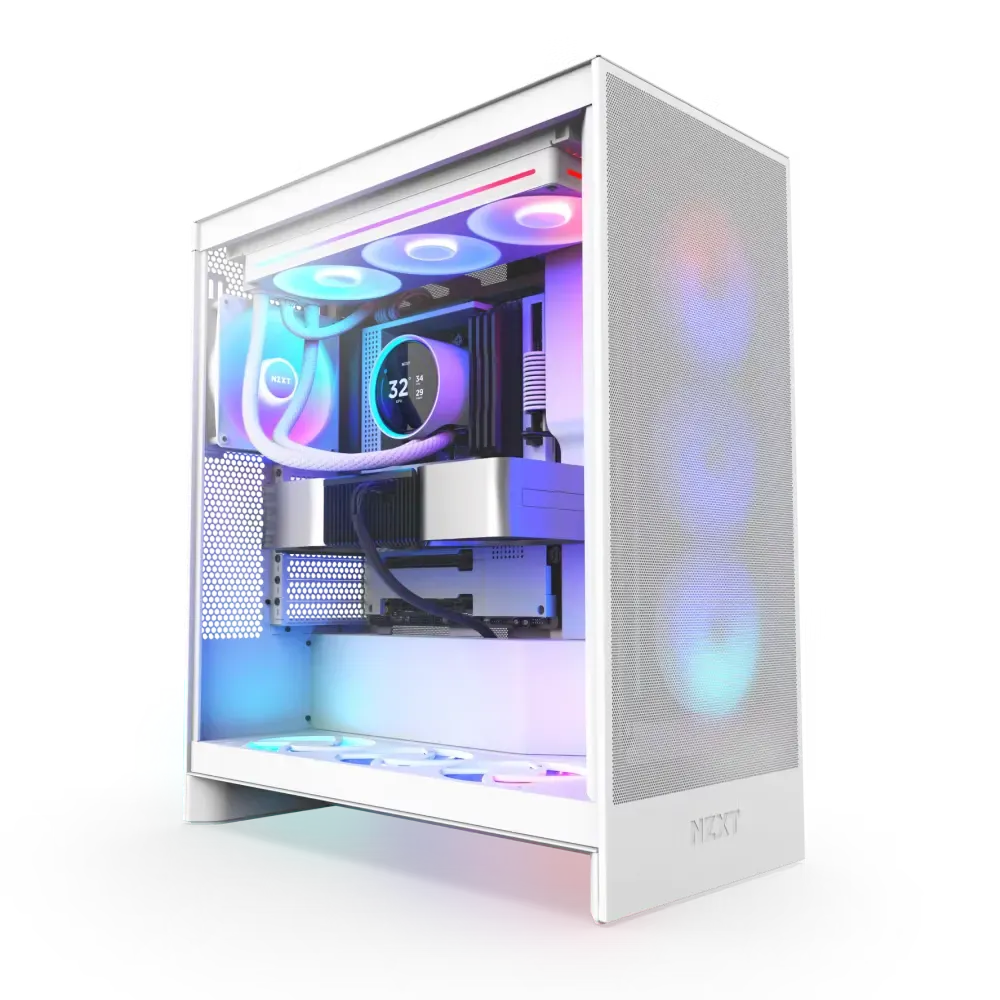
Everyday gear
The other gear on display is more traditional, yet nonetheless exciting. I later pick up review samples for the Function 2 keyboard, Capsule Mini, and the Lift 2 Symm mouse, more on those below.
Once again, I remain impressed by how smartly NZXT approaches its design language. The presented lineup is all matte white, as are the review samples, and they’re striking in person. And, once more, their visuals don’t come at the cost of usability.
The Capsule Mini
The Capsule Mini is an easy example. It’s a small USB cardioid mouse that looks, well, like a capsule. It stands just over 7 inches tall, meaning it doesn’t take up nearly as much space as others of its kind. It’s not quite as petite as the Razer Seiren Mini, but I don’t mind. On the desk, it captures the eye every time I glance over my setup. This is a pretty accessory.
Its setup is simple. On the most basic level, this is a plug-and-play device, and the sound quality is uniformly excellent even without software. The NZXT Cam app is Windows only, and you have to download it separately. Although it bears saying, there isn’t much there. Gain controls are entirely digital, as the mic doesn’t have a separate button for them. You can adjust the sidetone, or how much you hear of your voice while speaking. There are also some level adjustments. But beyond that, the app is quite bare compared to others.
On the center of the mic is a single volume dial that doubles as a mute button. Click it once, and the indicator LED changes along with it. There’s a 3.5mm jack for headphones, and that’s about it.
But that’s kind of the point. This isn’t a mic for experienced users. It’s the kind of mic that I would get for my nieces, who are just starting to game and chat online. Which is not a put-down, either. It’s a compliment to how accessible this design is. The Capsule Mini is everything you’d want from a first mic. It’s sturdy, it sounds great, and it works the moment you plug it in.
Simple conveniences are elegant at times.
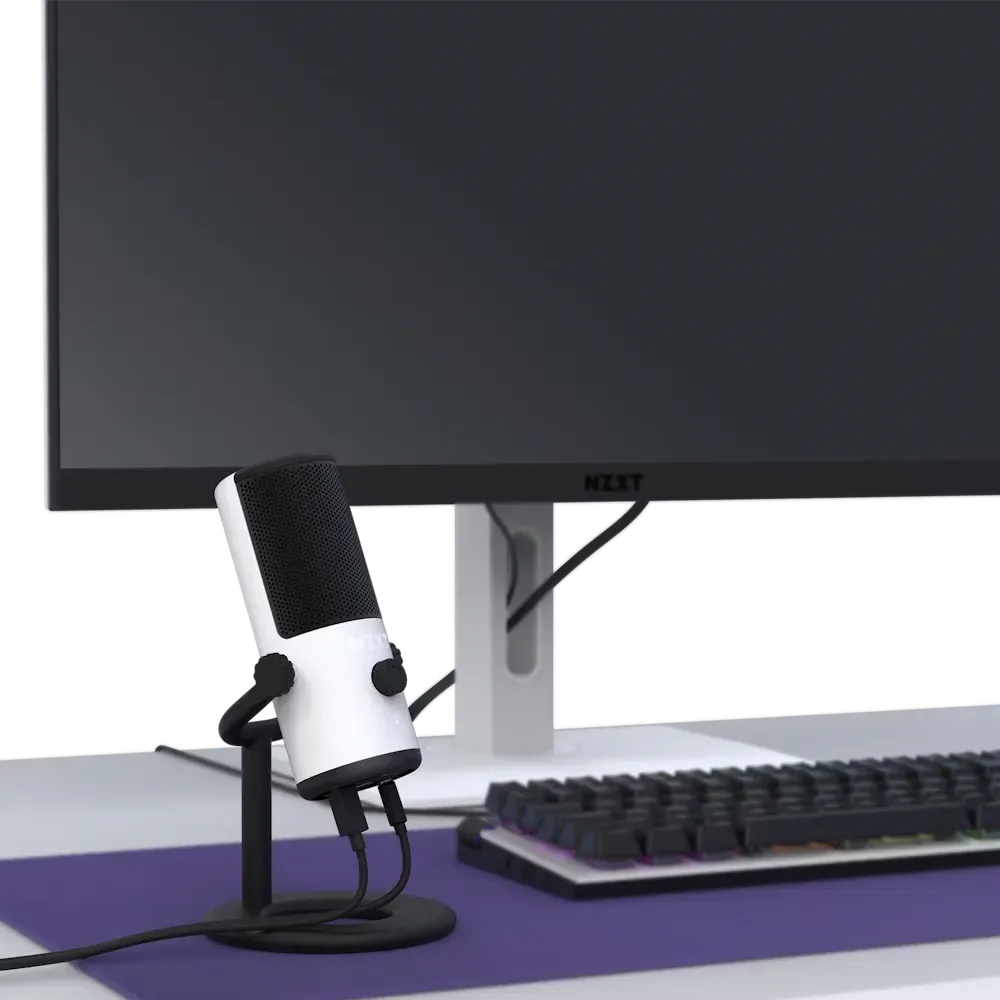
Lift 2 Symm
Similarly elegant is the Lift 2 Symm mouse. At just 58 grams in weight, it’s a light little thing. It also doesn’t have a traditional bottom, which initially freaked me out. I was certain that I’d broken the review sample right out of the box. But no, this is how it’s meant to be. It’s part of the design to keep the weight as low as possible.
It’s also wired, which is something of a novelty these days when almost all are wireless. I prefer the wire. I’m old that way. But also, there are times that I travel with my mouse and I consistently forget the Bluetooth receiver. For someone with ADHD, a wire is just a more reliable proposition.
The lightness is also part of the deal, and it’s something that at first didn’t sit right with me. I have big, dumb hands, and initially, this didn’t feel like the mouse for them. Yet, over time, that changed. Especially when combined with the smoothness of operation. The mouse practically glides on a mousepad, and every single game of Apex Legends has felt joyous. This is an accurate device, even for someone who isn’t particularly gifted when it comes to twitch-shooters. I spent the entirety of the new Call of Duty: Black Ops 6 beta with the Symm, and it’s probably the best I’ve done in this series.
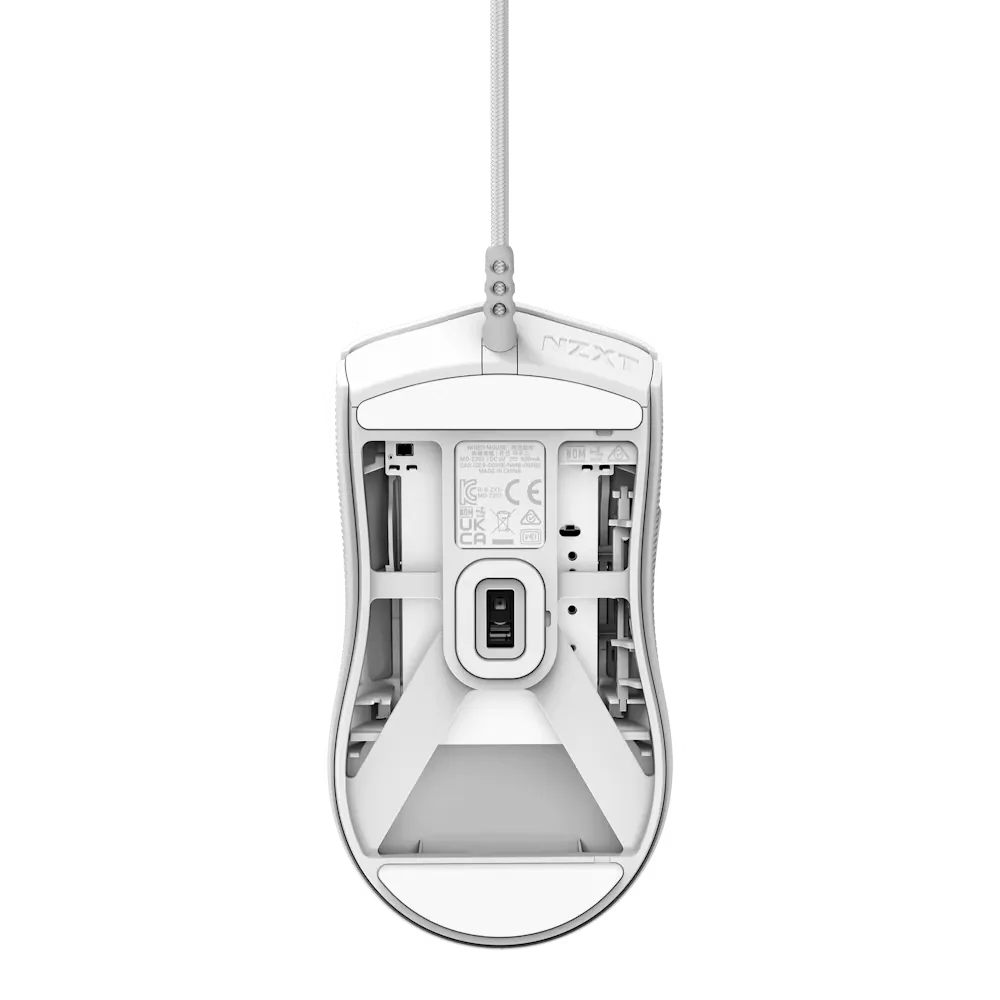
The Symm comes with five buttons, which is about regular for a gaming mouse these days. They have a great clicky feel to them, and I haven’t noticed any issues with responsiveness. My one complaint harkens back to the size, which for my stupid hands causes the occasional misclick. But that’s hardly a problem unique to The Symm.
Now, given to someone with smaller hands, The Symm sings. Every comment I’ve heard about the mouse from others has been the same delighted: “It’s so light!” Regardless of how you grip the mouse, it lives up to the symmetrical moniker.
At around 60 euros in price, The Symm is a great candidate for the first proper gaming mouse. Like The Capsule, it has a single-minded purpose to deliver quality at a price. It gets there by stripping some of the more bells and whistles, but, again, that’s part of the point. For those who want to join the PC gaming world, it’s precisely the kind of access point that makes sense. Getting the first accessory right is a big part of a smooth transition, and The Symm accomplishes that.
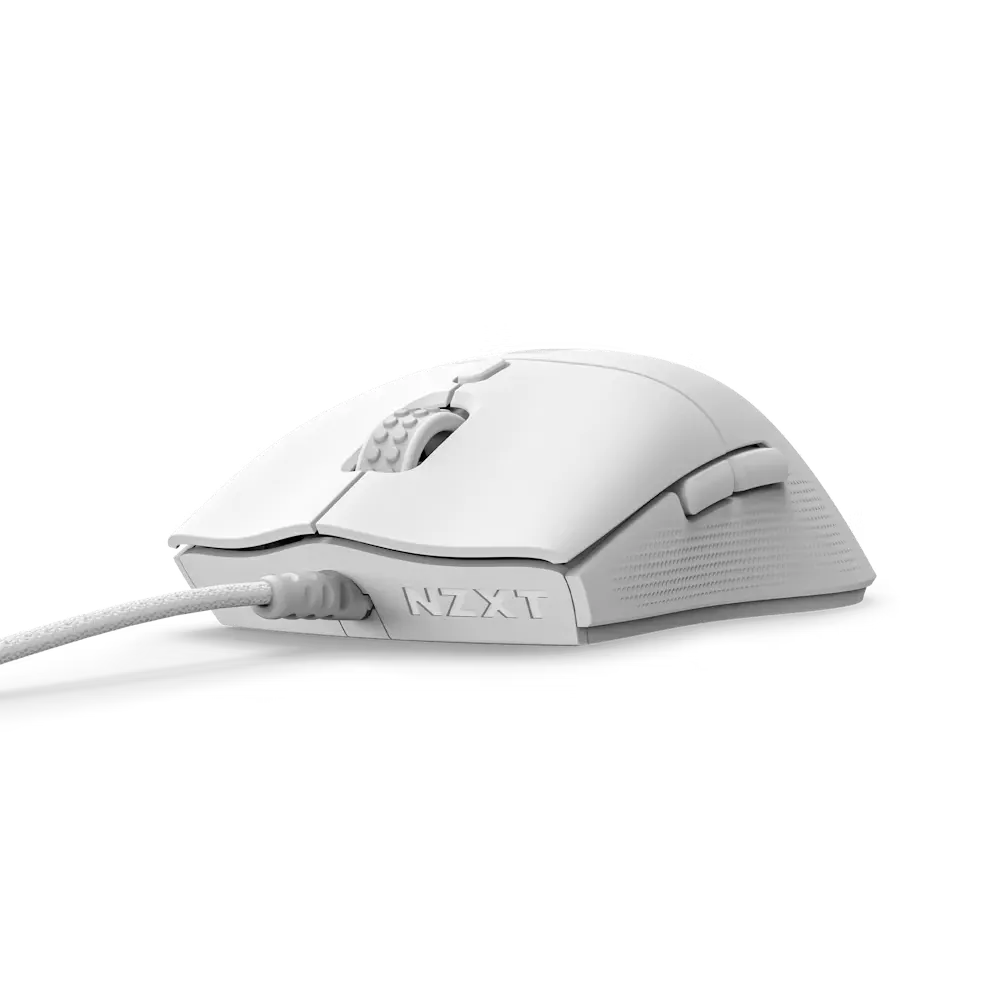
Function 2
The last of the everyday gear is the Function 2, a keyboard that is a bit more advanced, and requires some explaining.
Gaming keyboards, as such, are wild things. Some emphasize minimalism and cut out everything but the absolute necessities. Others throw in everything, including media keys, knobs, and whistles. They might weigh as much as a small pony or nothing at all. Then there are the keys, which come in different types of actuation. Meaning, how fast they respond when you press them. Some factor in weight, others how fast the key clicks upon pressing, or how fast it returns to its original state.
Now, this won't matter to the first-timer and the uninitiated. What does matter is how the keyboard feels to type and play with. Not every keyboard type will work for everyone. So it’s a happy surprise to find the Function 2 equipped with swappable keys (35g and 45g) that come in the box, tools included. Even better, they’re not difficult to change, and you don’t need to swap everything out all at once. Instead, it allows for customization on the fly. For example, you might want to have more forceful feedback on the WASD keys or a looser feel for keys used in MMO games. Whatever the necessity, Function 2 delivers superbly on this front.
As I present the Function 2 to a gamer and an average user, the responses are surprisingly similar. Both love the form and, well, function, and neither are hugely impressed with the excessive LED lights. Luckily, once we tone down the backlights, impressions are far more forgiving. The typing experience and quietness are both subject of great praise. Especially with gaming, where the responsiveness with fast paced titles like Doom Eternal never lets up.
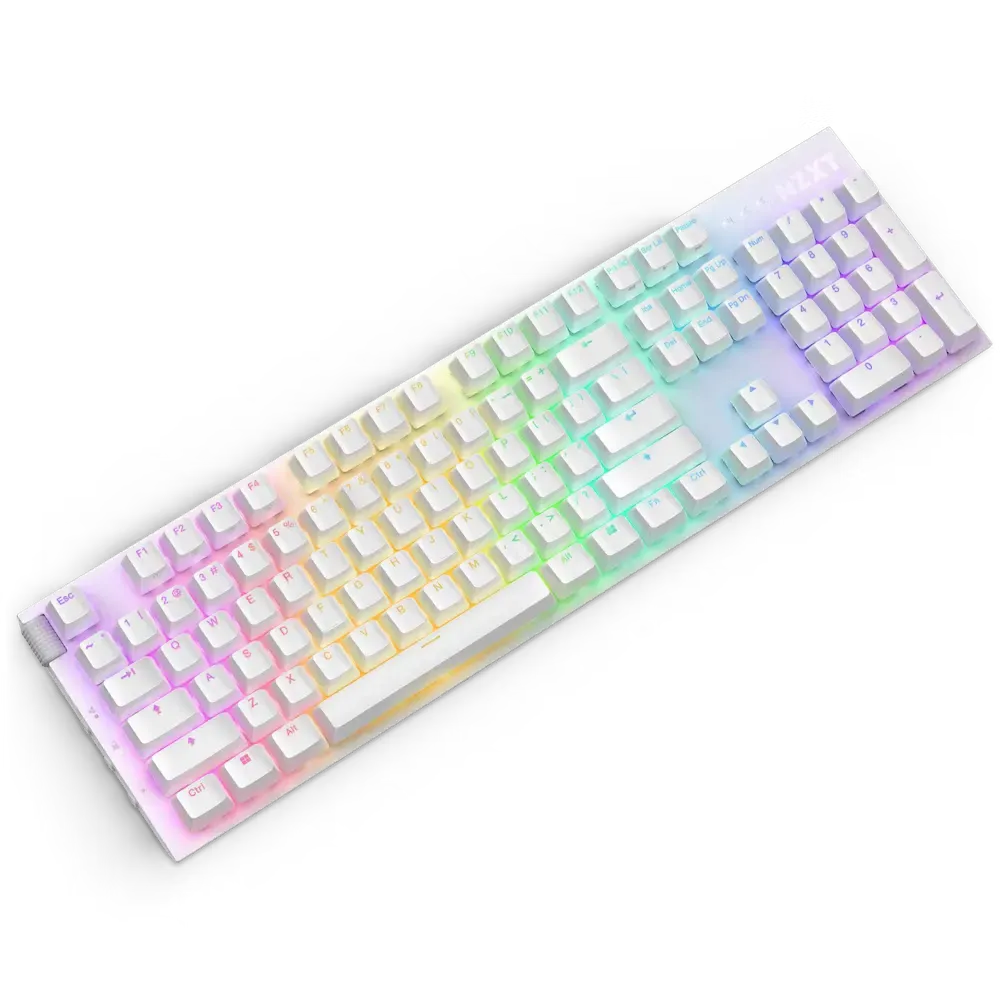
If key weight means nothing to you, don’t worry. Function 2 works perfectly straight out of the box. It’s here the aforementioned CAM software comes into play. Compared to The Capsule Mini, it’s a far more robust offering. The keyboard is fully backlit, down to individual keys, and the software can adjust every one of them. You can also remap keys and change the actuation settings through the software.
On the left-hand side of the keyboard are the media and volume buttons, which feel a little awkward to me. They’re not particularly clearly marked, so it’s taken a little while to remember which is which. More than once I’ve clicked the wrong one. Once I got the placement down, it’s a nice addition, but not one that I would miss if it were gone.
What I would miss is how the Function 2 feels. It’s a joy to type and play with. The keys are whisper quiet, and there’s a lovely bounce to every press, even on the default settings. My use cases are very mixed. I game as much as I can, but I type a lot, and I edit video and audio. Each of these requires a very specific type of setting. So far, Function 2 has delivered on all counts. One thing that I’d love to see is different color keys so that I could modify the keyboard to indicate shortcuts I use in editing software.
In terms of comfort, the Function 2 comes with an armrest that attaches with a magnet to the keyboard. It’s a little hard and slippery at first, but I’ve grown accustomed to it. My hands, as mentioned, are big, so anything to let them rest is a bonus. For them, the harder surface is a blessing, as it prevents me from resting at weird angles. For anyone with slimmer wrists, you might want to invest in another type of armrest.
At around 150 euros, the Function 2 sits squarely in the midrange of keyboard pricing. But it punches well above that with solid build quality and usefulness. It replaced my five-year-old keyboard and has become my daily driver for the past two weeks, and I don’t see myself letting it go until it dies for good.

Accessible and comprehensive
Accessories are one thing, and NZXT doesn't settle for just them. After the demonstration, before I my month with the gear, I can't help but bring up my anxiety about PC gaming.
"What is your approach to gamers like myself, who aren't neurotypical, and who worry about getting into a field that's rapidly changing?"
The response is comprehensive.
First, NZXT offers choice. From pre-built models to fully customized ones, fledling gamers can choose an approach that suits them right off the bat. Even better, every aspect of the selection process is clearly explained.
Later, at home, I take a look at some options. I have no idea what components work best with one another, and, luckily, I don't need to. Instead, NZXT explains the approach in a way that's user friendly and easily understood: Frames Per Second.
Simply put, the higher the frames, the better. Below them, you can choose your screen resolution from Full HD to 4k.
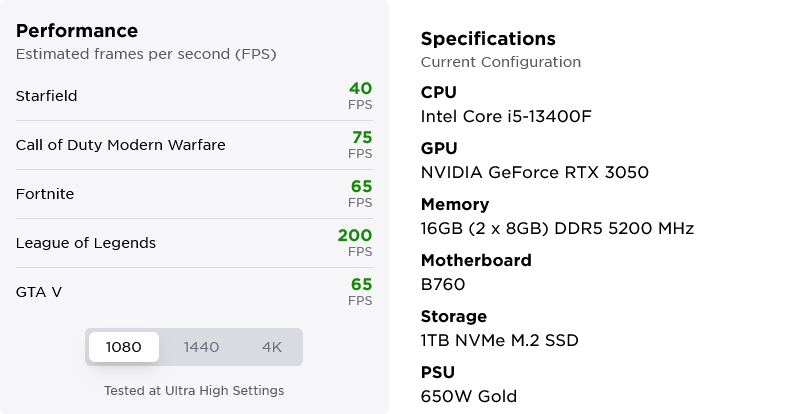
It sounds like a simple thing, but it's vitally important to everyone who can't or doesn't want to get into the weeds with building. If you know what kind of monitor you have, you can already estimate what kind of performance you're looking for.
Creating a custom setup is similarly intuitive, with helpful guides peppered throughout the process. For advanced users, it may sound simplistic, but this isn't aimed at them. It's for people looking for their first gaming rig, or parents getting one for their child. It's for neurodivergent gamers like myself, who just want to learn what works for them.
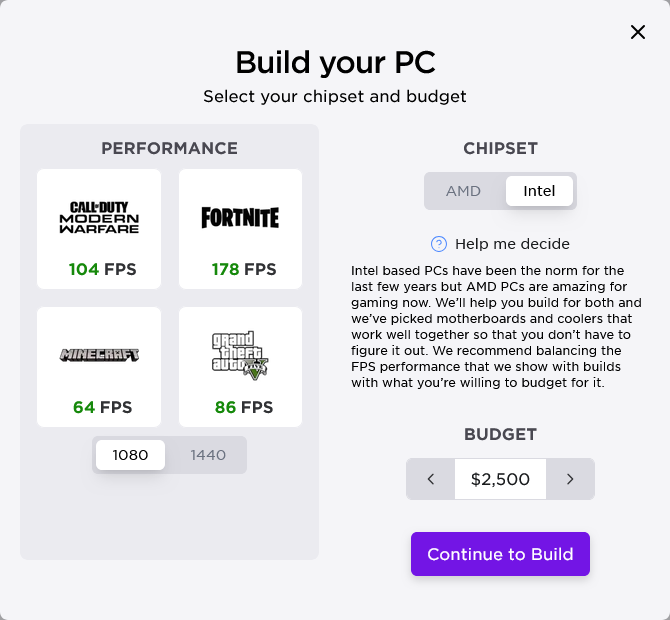
The custom setups can be pre-built by NZXT, which takes away another step from the difficulty of getting into gaming. Alternatively, you can order the components separately and build the setup yourself. Based on what I saw at Gamescom, this feels like a less daunting process than before. Look for a tutorial on how to build your own gaming PC later this year!
The future
NZXT is still a relatively new acquaintance in the Nordics. I was only partially acquainted with their products before meeting them at Gamescom. For this article, I interviewed six gamers of varying levels of expertise and age. Now, the NZXT devices will become my daily drivers, and I'll update this article in six months to let you know how they've aged. I will also put together a build guide for neurodivergent and new builders later this year.
The best thing I can say about my introduction to NZXT is that it has reignited my passion for tinkering and PC gaming. Until now, it was something that I did for work, and often feared the problems it would cause when a component failed. I felt like I had fallen off the wagon entirely, and couldn't get back to this part of a hobby that I cherish. Now, it feels like a door has opened. That kind of accessibility is vitally important for any community to thrive, and it's immensely promising that NZXT cultivates an environment for others to learn and grow into their passion.

